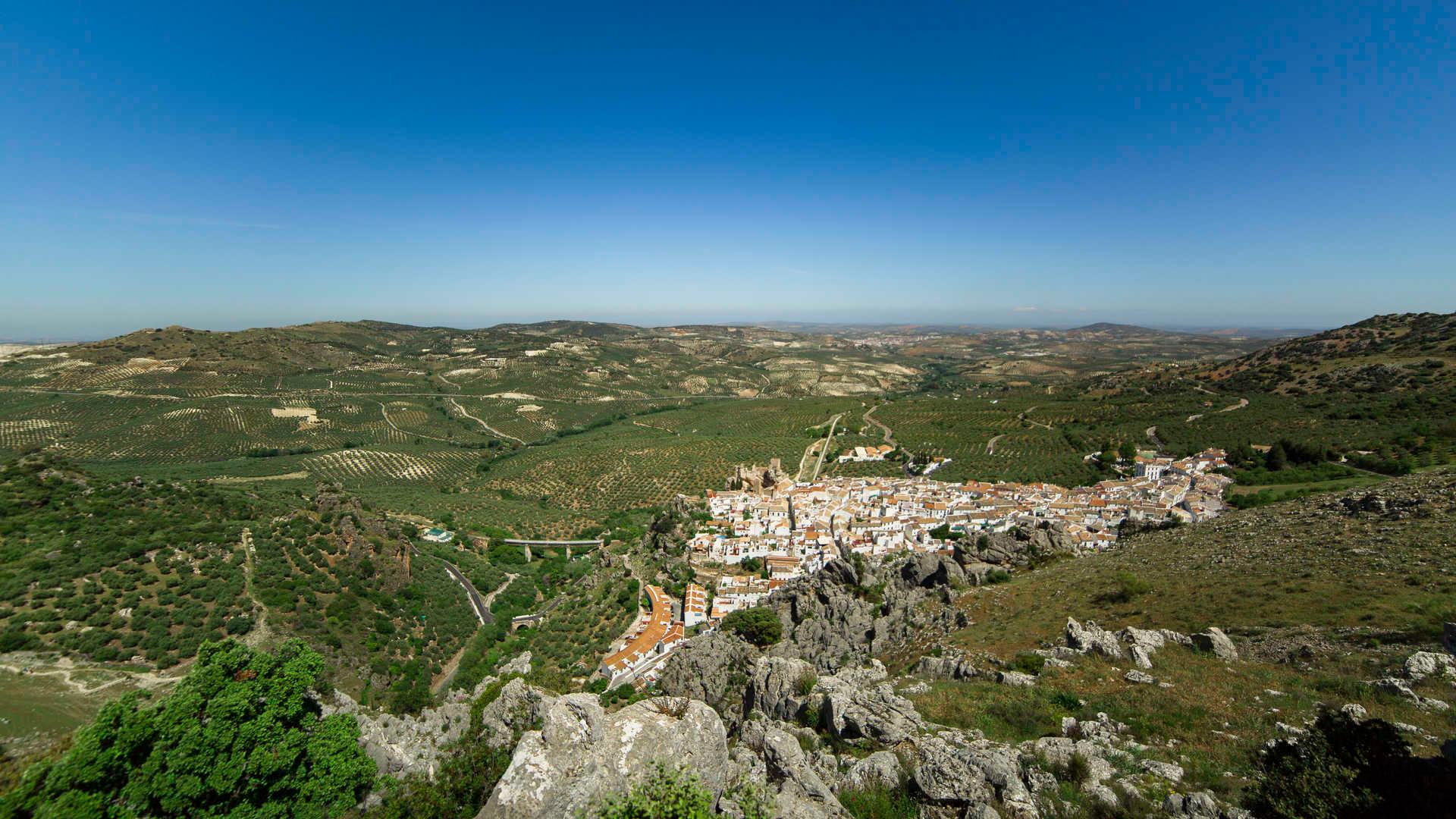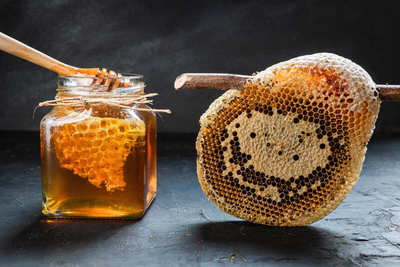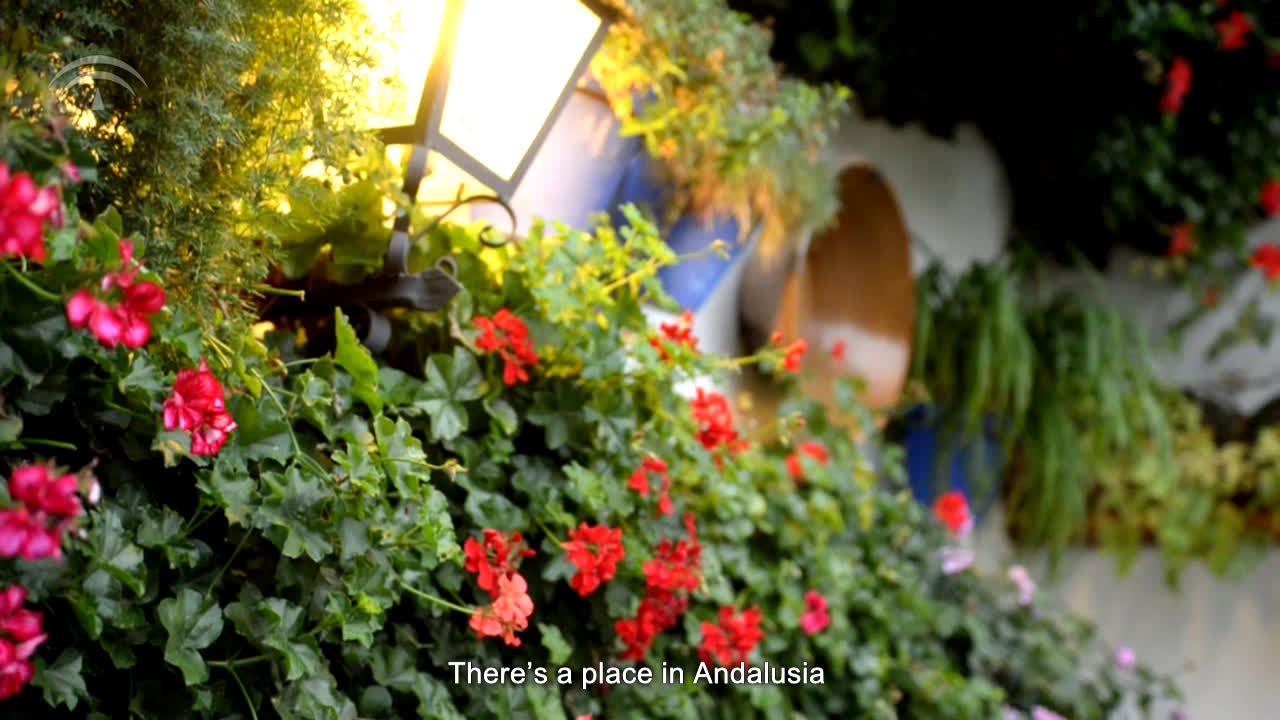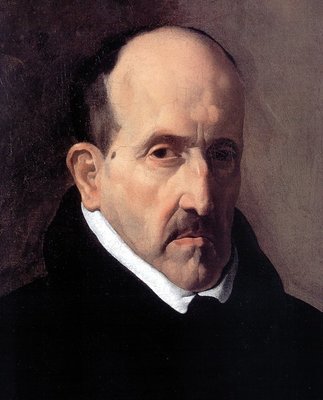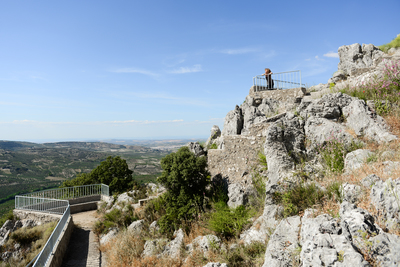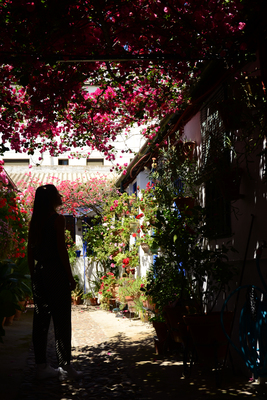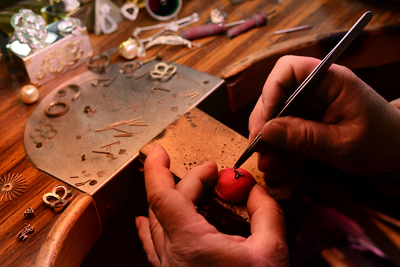Julio Romero de Torres portrayed the essence of Cordoba
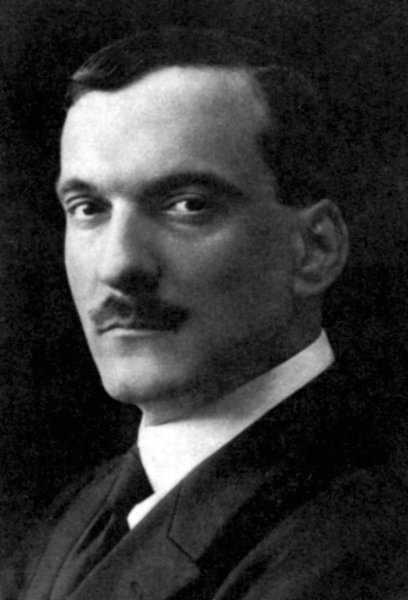
The grand maestro of Andalusian symbolism gives his works a realist character with a certain sense of poetry. He painted female beauty and the essence of Cordoba like none other.
Julio Romero de Torres (Cordoba, 1874-1930).
Master of Andalusian symbolism
Julio Romero de Torres was one of Spain's most renowned artists during the period known as the turn of the century, and was eventually considered to be the absolute maestro of Andalusian symbolism. For many years his work was associated with popular pictorial trends and Spanish folklore, but his work has its own real identity and progressed from being a mere cliché to being part of the aesthetic movement embracing symbolism.
His time was divided between Cordoba and Madrid and it was in the latter where his work started to be published thanks to his friendship with important artists writers of the period, most importantly with Ramón María del Valle-Inclán.
From an early age he had ties with the Cordoba Art Museum – his father was the curator of the same as well as being a painter-, so Julio Romero de Torres' training was associated with both the paternal influence and that of the Cordoba galleries like the workshops of the Fine Arts School and the Music Conservatory. During what is considered to be the first phase of his artistic production he developed a luminist style painting related to aesthetics of an impressionist root. But it was after a trip to Italy in 1908 when his career took a definitive turn, consolidating his own a style that would identify his painting.
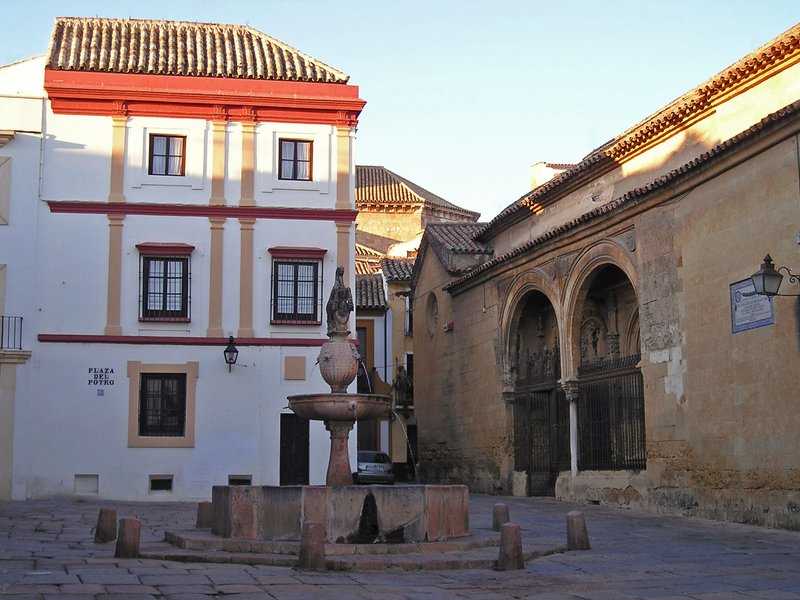
Roman remains
In its day Cordoba rivalled the splendour of cities like Constantinople and Baghdad. Between the 10th and 12th century, Cordoba was the largest city in Europe and the centre of avant-garde culture. It all began in Roman times.
At that time there was a temple in the city whose incredible size, 16 metres wide, 32 metres long and 15 metres high, was testimony to its great importance, since Cordoba was part of the Via Augusta. The colonial forum, where the main public buildings of the Roman city were located, crossed the current Plaza de las Tendillas, nerve centre of the city where it is worth waiting for the hours to be sounded by a guitar playing a "solea", from the clock tower.
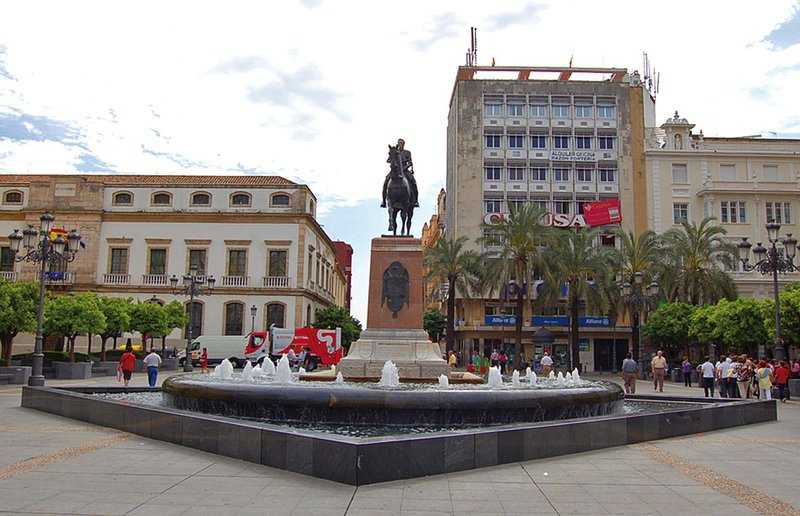
This is completely different from the Andalusian architecture in the Plaza de la Corredera. The arched buildings have a Castilian look about them which can be explained by the fact that the architect, Antonio Ramos, was from Salamanca. The square had been the scene of executions and punishments ordered by the Inquisition and it had also been bullring.
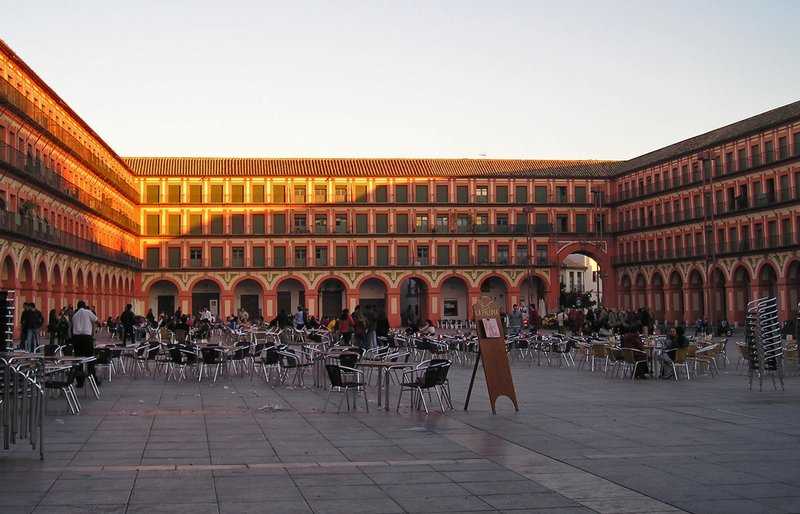
Plaza del Potro and Romero de Torres Museum
Our walk continues until we reach the Plaza del Potro where we'll find the Museum of Fine Arts, in what used to be the Hospital de la Caridad. Here there is an important collection of works by Cordoba artists from the Middle Ages to the present day, including Pedro Roman, Pablo Céspedes, Juan Luis Zambrano and of course, Julio Romero de Torres whose Museum is just a few metres away. Sorolla and Zuloaga also have a place in this gallery that preserves an important collection of drawings by Spanish artists from the 16th to the 20th centuries.
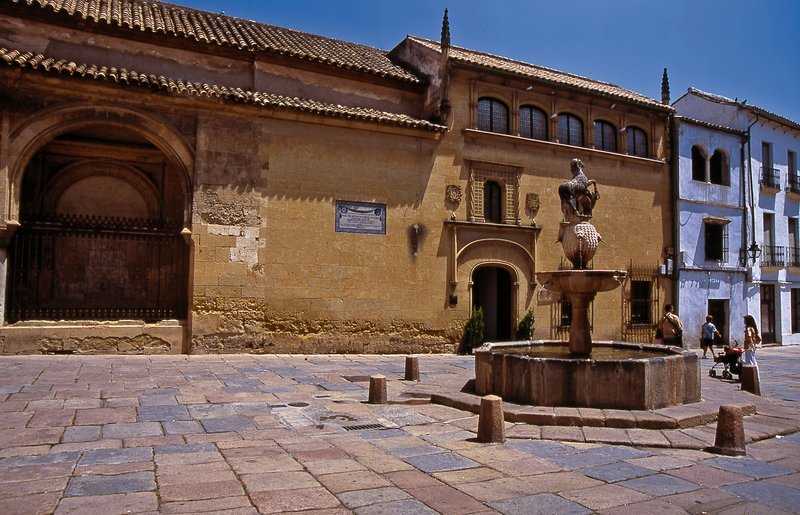
The Julio Romero de Torres Museum is located in what used to be his home. There are six rooms exhibiting a large part of the work of the Cordobese artist who knew better than anyone how to paint the beauty of the Andalusian woman, proof of which came from one of his most internationally renowned paintings La Chiquita Piconera, which can be seen in this museum alongside better known works like Viva el Pelo and Naranjas y Limones. In this museum there are also numerous portraits, photographs and publications of the painter.
An encounter with history
Nearby, in the place where the second largest theatre in the Roman empire used to stand, we'll find the Archaeological Museum. Many of the remains of the ancient theatre are actually incorporated into the museum itself, one of the most important in Spain as far as archaeology is concerned. Here you can remains relating to the industries which existed in the city. It also contains the largest collection of Al Andalus coins in the world, the silver coins from the Umayyad era being especially beautiful. And finally, a postcard image reproduced a thousand times: the Callejón de las Flores, Cordoba's passport to the world and without doubt one of the charming and delightful areas in the city.
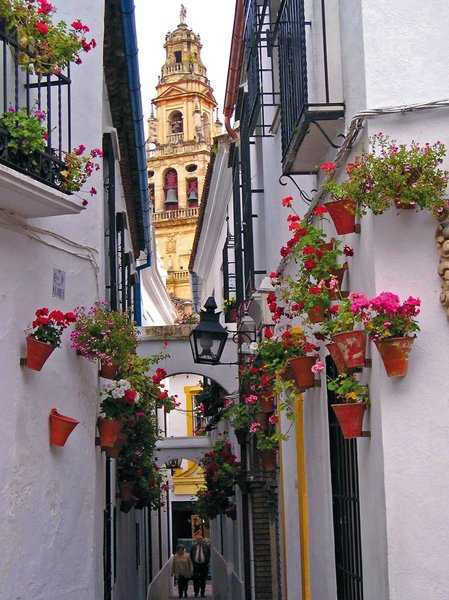
Walk 1: Roman Bridge - Mosque/Cathedral of Cordoba - Calahorra Tower (Three Cultures Museum) - Jewish Quarter - Calleja de las Flores - Monument to Maimónides - Plaza de Maimonides - Bullfighting Museum - Craft Bazaar - Calle Judíos - Synagogue - Almodóvar Gate.
Walk 2: Christian Monarchs' Fortress - Royal Stables - San Basilio Neighbourhood - Botanical Gardens - Guadalquivir River.
Walk 3: Plaza del Potro - Museum of Fine Arts and the Julio Romero de Torres Museum - Church of San Francisco - Portillo Arch - Calle Julio Romero de Torres - Plaza Jerónimo Páez - Archaeological Museum - Plaza de la Corredera.


